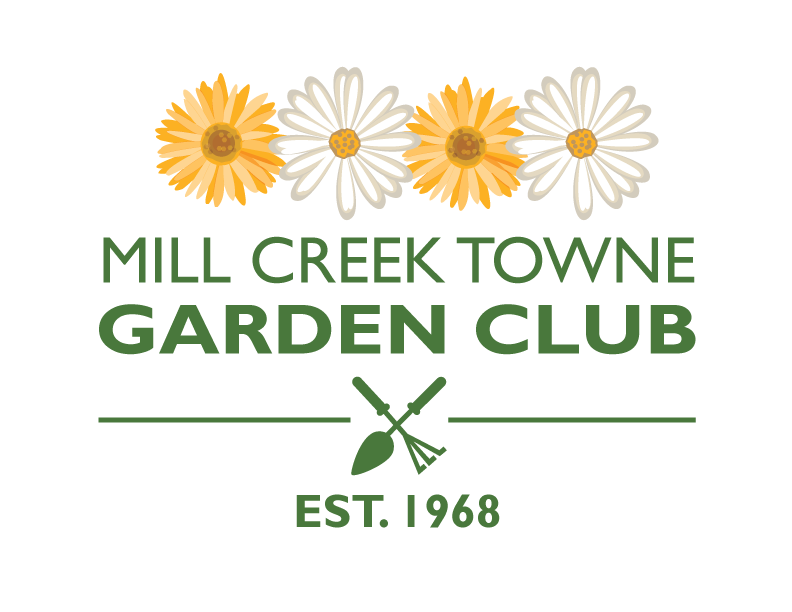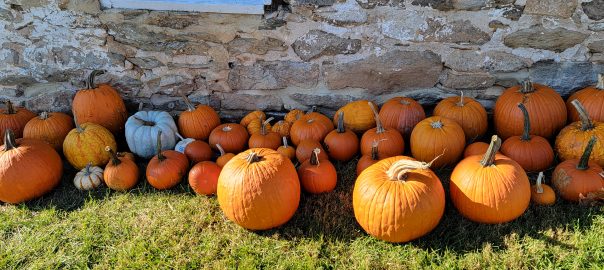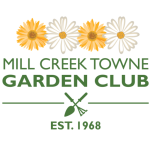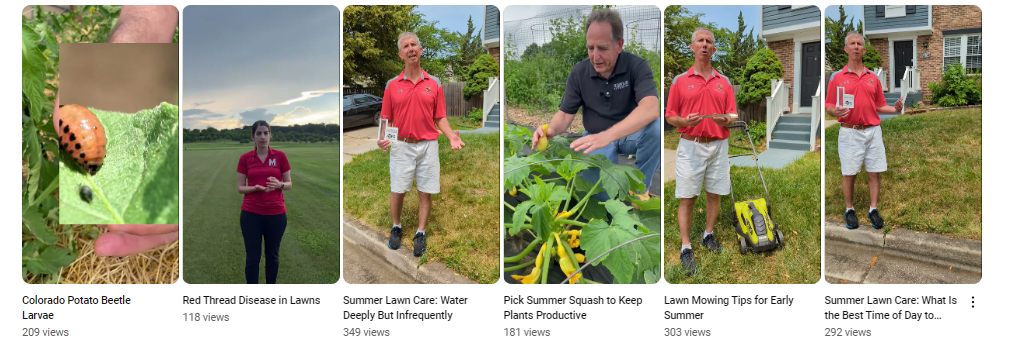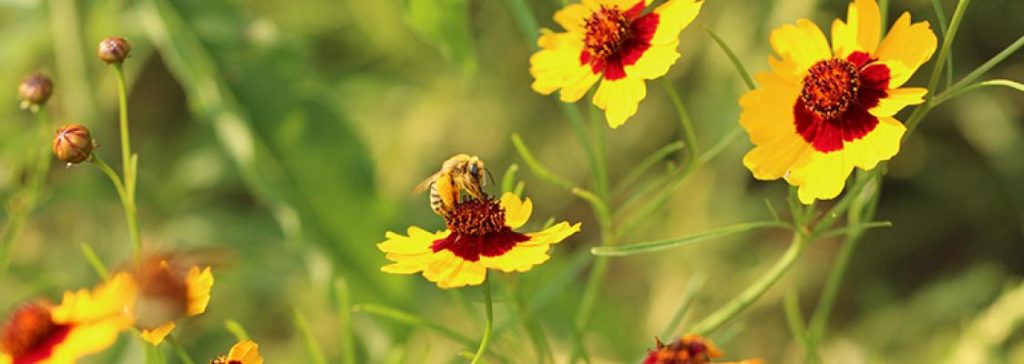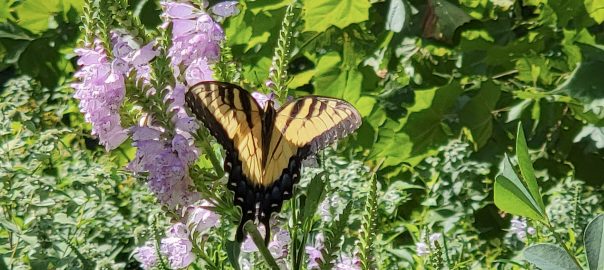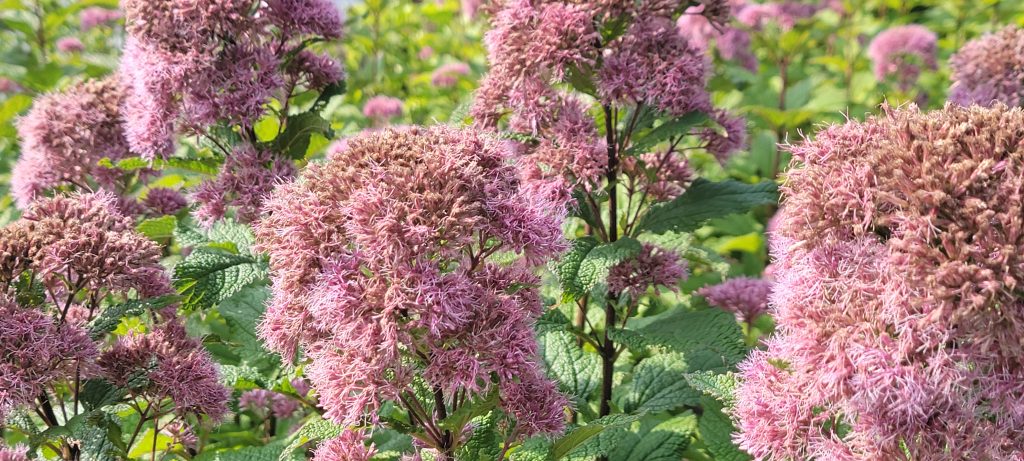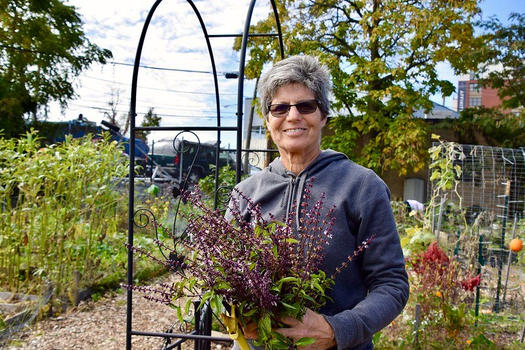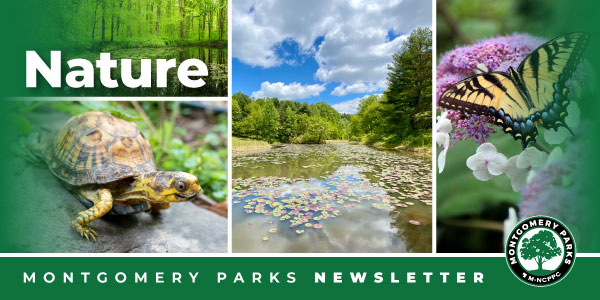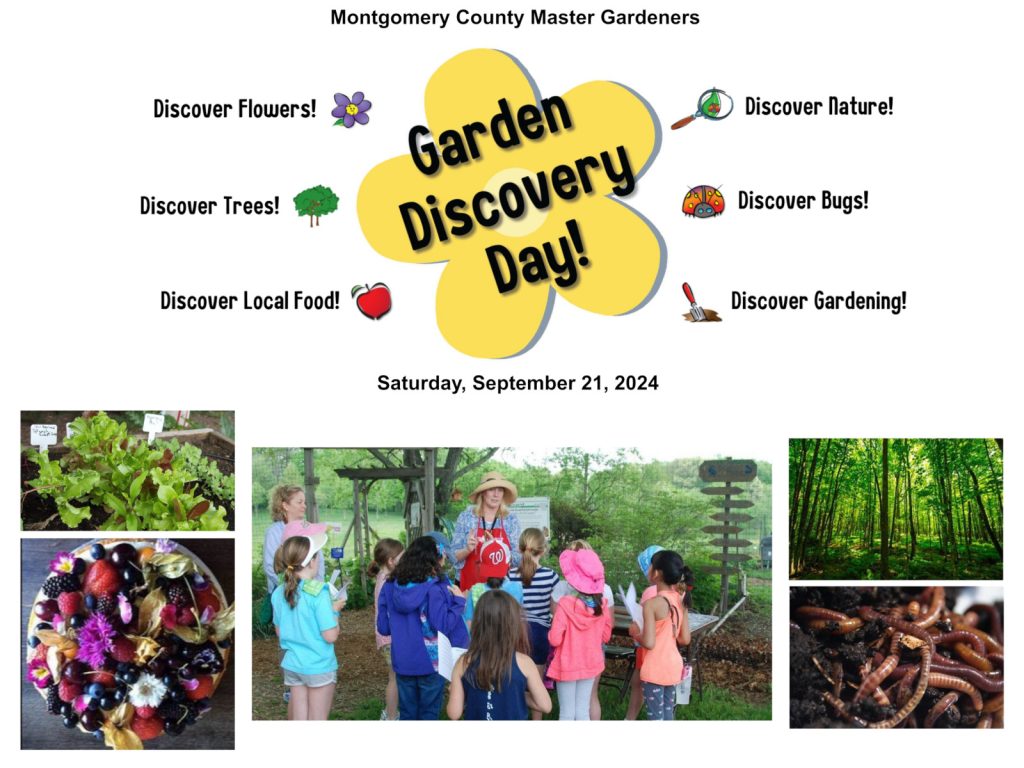Hello Friends, Neighbors, Fellow Gardeners,
Hope you have a Happy and Safe Halloween! It’s the beginning of fall, so now is the time enjoy your fall harvest, fall colors, and cooler weather. Here are some garden tips, educational opportunities, and videos for October. A lot of gardening events are announced on Facebook as well as on our website. Some upcoming events/resources include a Mill Creek Towne Garden Club’s Community Event on Reduce, Reuse, and Recycle Programs, Harvest Festival at the Agricultural History Farm Park, MCPL’s Houseplants 101, Master Gardener Lectures – Seed Saving Fundamentals, Montgomery Park’s Native Specialist Bees, Wildflower Walks, Dealing with Deer and Other Mammal Pests in Your Garden, Birdability Week, and Mixed Winter Container events, Volunteer Gardener Opportunities with Montgomery Parks for SSL Hours, Montgomery College’s Home and Garden Lifelong Learning classes, American Horticultural Society’s Great American Gardeners Webinar Series, and more! These events will be hosted as online or live events.
Planning Tips
- It is harvest time and also a good time to start taking stock of what worked well for you this season and what didn’t.
- Mark and photograph your bulb plantings now, while they are still visible.
- Plan where fall bulbs will go.
- Check your local garden center for end-of-summer bargains.
- Order spring-flowering bulbs to arrive for planting this fall.
- Attend a local garden club meeting or plant exchange.
- Start or update your garden journals.
- Read a good gardening book or magazine.
- Plan who is going to water plants during your vacation.
- Volunteer at a local public or historic garden.
- Plan for 2024 with these Free resources: Landscaping with Native Plants by the Maryland Native Plant Society, Plant Invaders of Mid-Atlantic Natural Areas by the National Park Service, Master Gardeners of Northern Virginia Reading Room. Visit our Online Gardening Resources page for more helpful online resources.
- Buy a good gardening book or magazine subscription for a gift for your favorite gardener.
- Have a question about gardening? Check the University of Maryland Extension’s New Maryland Grows blog for garden tips.
Reduce, Reuse, and Recycle Program
Tue, October 22 @ 7:00 pm – 8:00 pm
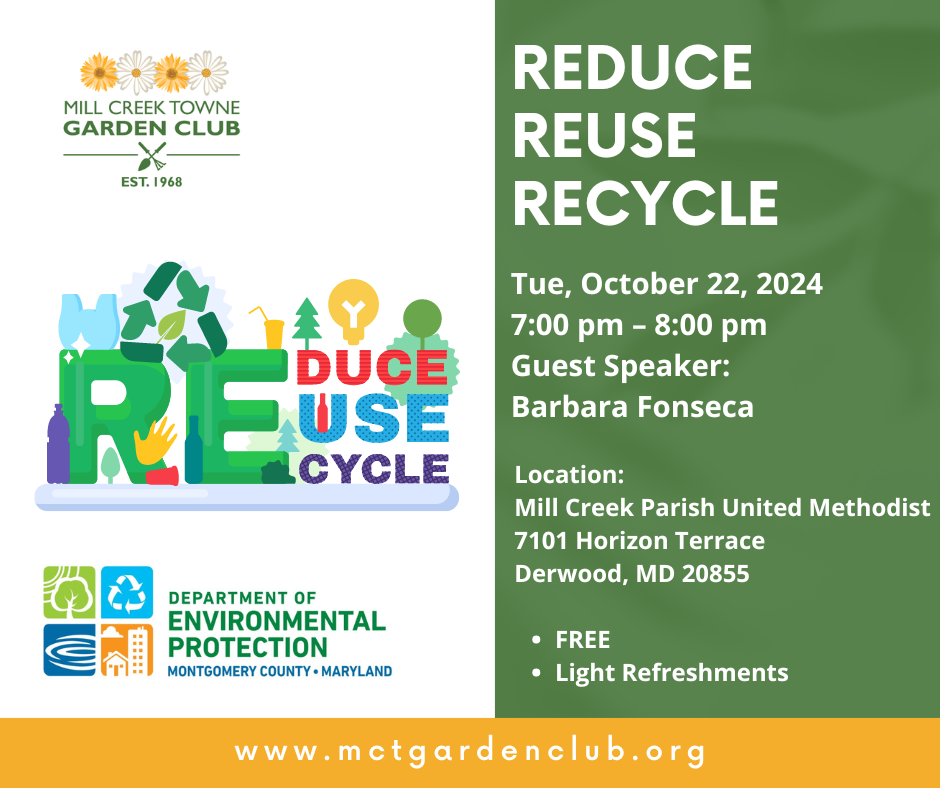
Join us for a presentation on Montgomery County’s Recycling Program with guest speaker Barbara Fonseca, a program specialist in Montgomery County’s Department of Environmental Protection Recycling and Resource Management Division. In this presentation, we will learn about the latest information and programs aimed to reduce waste in our county.
We invite you to join us and learn more about this program and hopefully be inspired to help make our county a little more GREEN!
- FREE
- Light Refreshments provided
RSVP: info@mctgardenclub.org
Please do NOT attend this event if you are or have been experiencing symptoms of illness.
THIS EVENT IS FREE, BUT DONATIONS ARE ALWAYS APPRECIATED!
Donations pay for landscaping, repair and maintenance of the Mill Creek Towne Entrances, and our garden-related programs at our community meetings.
NOTE: If Montgomery County Schools are closed due to inclement weather, the Garden Club meeting will be cancelled.
Join Mill Creek Towne Garden Club!
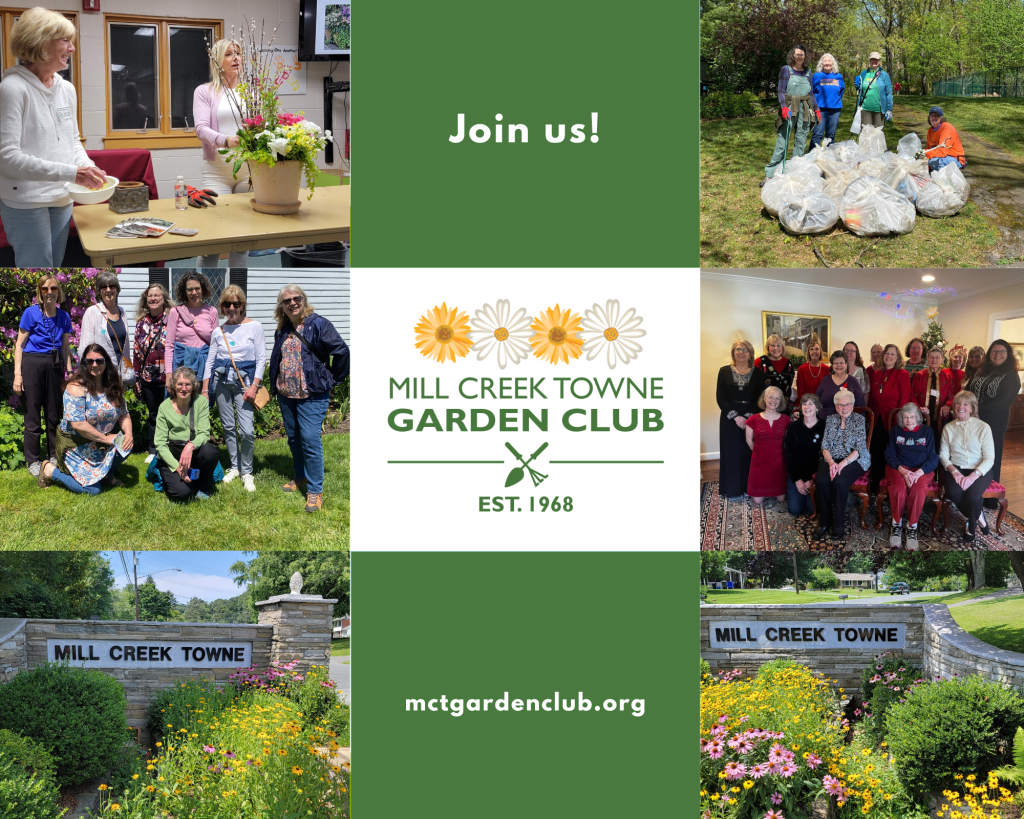
- Are you interested in gardening? Perhaps you’re a beginner, looking to learn more, or an experienced gardener interested in sharing your experiences and learning from others?
- Are you interested in making your home and community a more beautiful place to live?
- Are you interested in getting more involved in your community and getting to know your neighbors better?
Visit Our MCT Garden Club Website for Gardening Resources
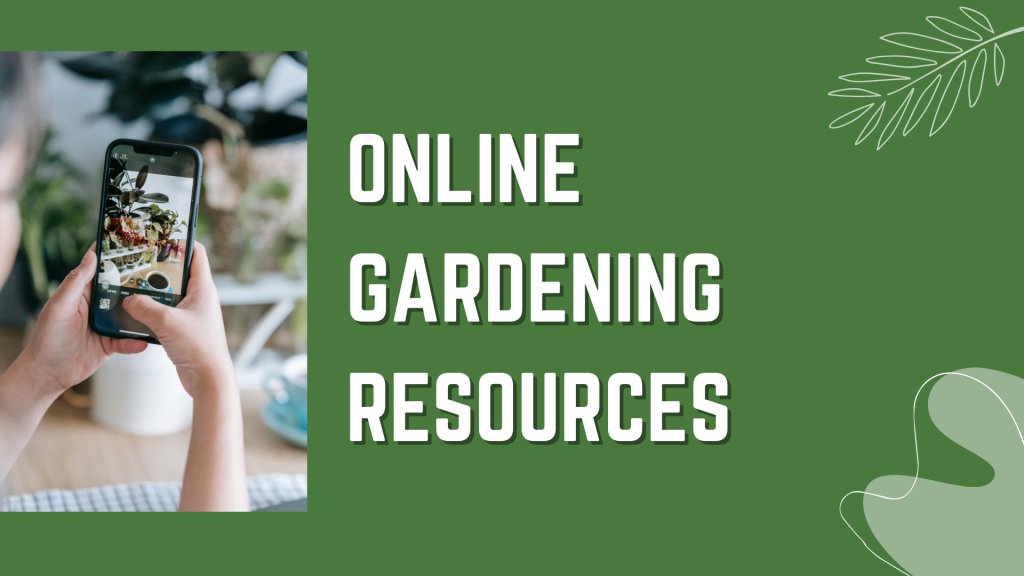
- Local Gardening Resources: Looking for a Master Gardener as a guest speaker, need gardening advice, or want to learn about resources in or near Mill Creek Towne? Visit our Resources page for details.
- MCTGC Blog: Check our monthly blog for garden tips and local/online garden-related events.
- Gardening Books: Looking for a gift for your favorite gardener? Visit our Gardening Books Resources page for holiday gift ideas.
- Local Gardens: Visit our Local Gardens page to learn about local gardens in our area.
- Montgomery County Farmers’ Markets: Support our local farmers. Check this page to learn about local farmers markets in our area or join a CSA and get fresh local produce year-round!
- Online Gardening Resources: Looking for gardening apps or online resources to help with your gardening? Check out our Online Gardening Resources page for some apps for your smartphone and online gardening resources focused on the DMV area.
- Recipes: Looking for a recipe for your home-grown veggies and fruit? Check our Recipes page for ideas.

Maryland Grows Blog
In weekly posts on MD HGIC’s blog, learn about pollinator conservation, growing native plants and food, and how to solve plant pest and disease problems.
MD HGIC Video Tips
Our Extension experts are sharing one-minute video tips to help you in the garden this summer. We’re talking about pest management in the vegetable garden, tree and lawn diseases, native plants, mowing lawns, and more!
For more information, please visit:
 |
|
What can Master Gardeners do for you?
- Help you select and care for annual and perennial plants, shrubs and trees.
- Determine if you need to test your soil.
- Provide you with information on lawn care.
- Identify weeds, beneficial and noxious insects, and plant diseases and remedies.
- Teach you how to use pesticides, mulch and compost.
- Guide you in pruning trees and shrubs.
- Provide you with options for managing wildlife.
- Provide you with gardening resources.
- Help you submit a plant sample for diagnosis
Plant Clinics are held at several sites in the county on a weekly basis and at special events such as garden festivals and the county fair. Regularly scheduled Plant Clinics are located at public libraries and farmers’ markets throughout the county as well as at the Audubon Naturalist Society in Chevy Chase. There are also clinics three days per week at Brookside Gardens. The busiest season is April through September, but some clinics are open year-round. Bring your plant samples and questions to one of these locations in Montgomery County, MD (see link below to find a location near you):
https://extension.umd.edu/mg/locations/plant-clinics
UMD Home and Garden Information Center: Ask a Master Gardener

Do you have a gardening question? Our Certified Professional Horticulturists, faculty, and Master Gardener Volunteers are ready to answer – year-round!
See below to ask a master gardener a question on the UMD Extension website:
Check out the revised list of Mid-Atlantic native plants for pollinators and beneficial insects, from the Xerces Society.
Flowers and Groundcovers
- From mid-October through November, plant hardy bulbs for spring flowering.
- Divide and move many perennials.
- Cut foliage of irises to 2″.
- Leave seedheads on Black-eyed Susans, Echinacea, Goldenrod, Sunflowers, and Thistles for the birds to enjoy over the winter.
- Sow wildflower seeds, such as California Poppies, for next spring.
- Collect dried flowers and grasses for an indoor vase.
- Check that all vines are securely tied against winter’s cold winds.
- Rake up weeds and their seedlings.
- Wait to mulch until ground freezes hard.
- After hard frost, sow seeds of spring-blooming hardy annuals and perennials, then mark beds!
- Collect plant seeds for next year’s planting and for trading at the annual Washington Gardener Magazine Seed Exchanges.
- Begin replanting pots with hardy annuals.
- Take cuttings from coleus and begonias to propagate and over-winter indoors.
- Plant newly purchased plants.
- Continue to deadhead.
- Remove spent annuals and replace with fall annuals. Water deeply.
- Fertilized established bulb beds.
- Dig up bulbs from your Gladiolus, Canna, Caladiums, and other tender bulbs; cut off foliage; let dry for a week; and store for the winter.
- Gather seeds and carefully label them. Store in dry location.
- Gently clean up the garden.
- Water thoroughly, especially if you receive no rain for more than seven days.
- Check for black spot on your roses – remove and discard any affected leaves in the trash, never back into your garden or in your compost – apply fungicide with Neem oil every two weeks during the growing season.
- Inspect your garden from powdery mildew. If seen, prune back perennials to create needed circulation. Discard properly (i.e., not in your compost bin).
- Weed. Especially look for fast-growing vines such as honeysuckle, autumn clematis, bittersweet, wild grape, Virginia creeper, and poison ivy.
- Pests to watch for: Aphids, spider mites, whiteflies, deer
- Diseases to watch for: Powdery mildew, Rust
- See UMD’s HGIC Garden Tips for more details.
- For a list of native plant resources, visit: https://extension.umd.edu/hgic/topics/native-plant-resources
5 Million Trees Initiative
Maryland’s goal is to plant and maintain 5 million native trees by 2031. There are various ways you can get involved – plant trees and register them — or volunteer! A number of tree-planting assistance programs are available at the municipal, county, and state levels.
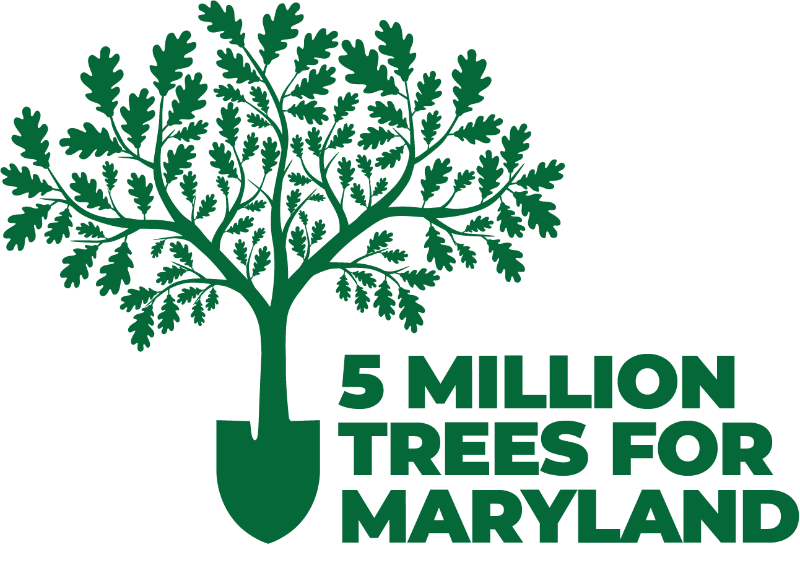
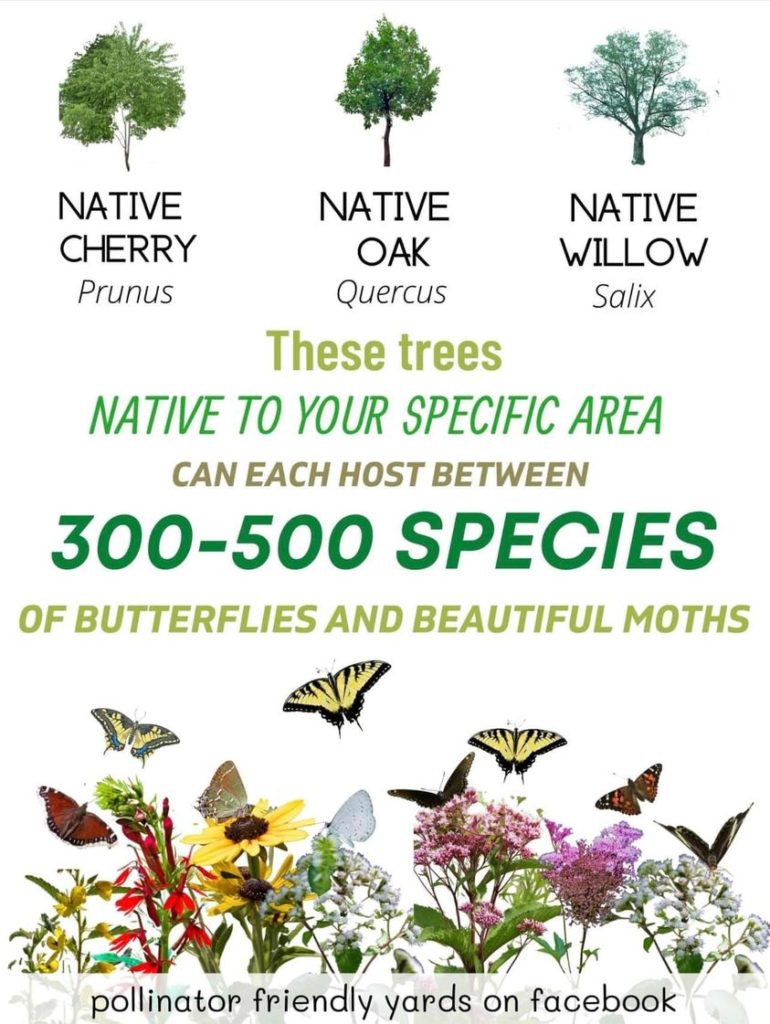
THIS is the SUPERPOWER of YOUR KEYSTONE NATIVE PLANTS.
- No exotic plant could ever achieve this.
- Want butterflies? Feed the caterpillars with keystone plants!
- Exotic plants will never support as many different species of caterpillars as the Keystone Natives can.
- Find your keystone native plants here by zip code.
If your zip code doesn’t give you enough information try zip codes of the nearest larger town or city. LINK: https://www.nwf.org/NativePlantFinder/

Trees and Shrubs
- Plant evergreens for a winter interest.
- Harvest most fruits before frost.
- If your conifers start shedding their needles or your spring bulb foliage starts peeking out of the ground, don’t worry. This is normal for our autumn cycle.
- Transplant trees when leaves begin to color.
- Divide ornamental grasses.
- Contact an certified arborist to have your trees’ health inspected.
- Soil test established trees that have not been performing well.
- Check often and water newly planted trees if they don’t pass the finger test (stick your finger deep into soil – dry? Water!)
- If you MUST mulch, remove old mulch then add 2″ – 3″ shredded pine or pine needles, keeping 3″ away from trunk.
- Keep an eye out for bark damage from rabbits and deer.
- Spray broadleaf evergreens with anti-desiccant to prevent dehydration.
- Use fallen leaves for mulch or compost.
- Look out for any Poison Ivy vines, which will turn crimson in the late fall and be easy to distinguish from other vines.
- Remove Ivy, Pachysandra, and other vine-like groundcover from under shrubs.
- Mulch or compost healthy leaves.
- Remove fallen, diseased leaves.
- Put diseased leaves, pesticide-laden grass clippings and weed seeds in your trash — not your compost pile.
- Turn your compost pile weekly and don’t let it dry out. Work compost into your planting beds.
- Remove rotting fruit from fruit trees and compost them.
- Spray with dormant oil to decrease pest infestations.
- Remove dead and dying trees.
- Pests to watch for: adelgids, aphids, azalea lacebug, borers, bagworms, caterpillars, leafminers, Gypsy moths, sawfly, webworm, spidermites, scale, and Japanese beetles, voles, and deer.
- Diseases to watch for: Wood decay/rot.
- For more tips, see UMD’s HGIC Garden Tips for more details.
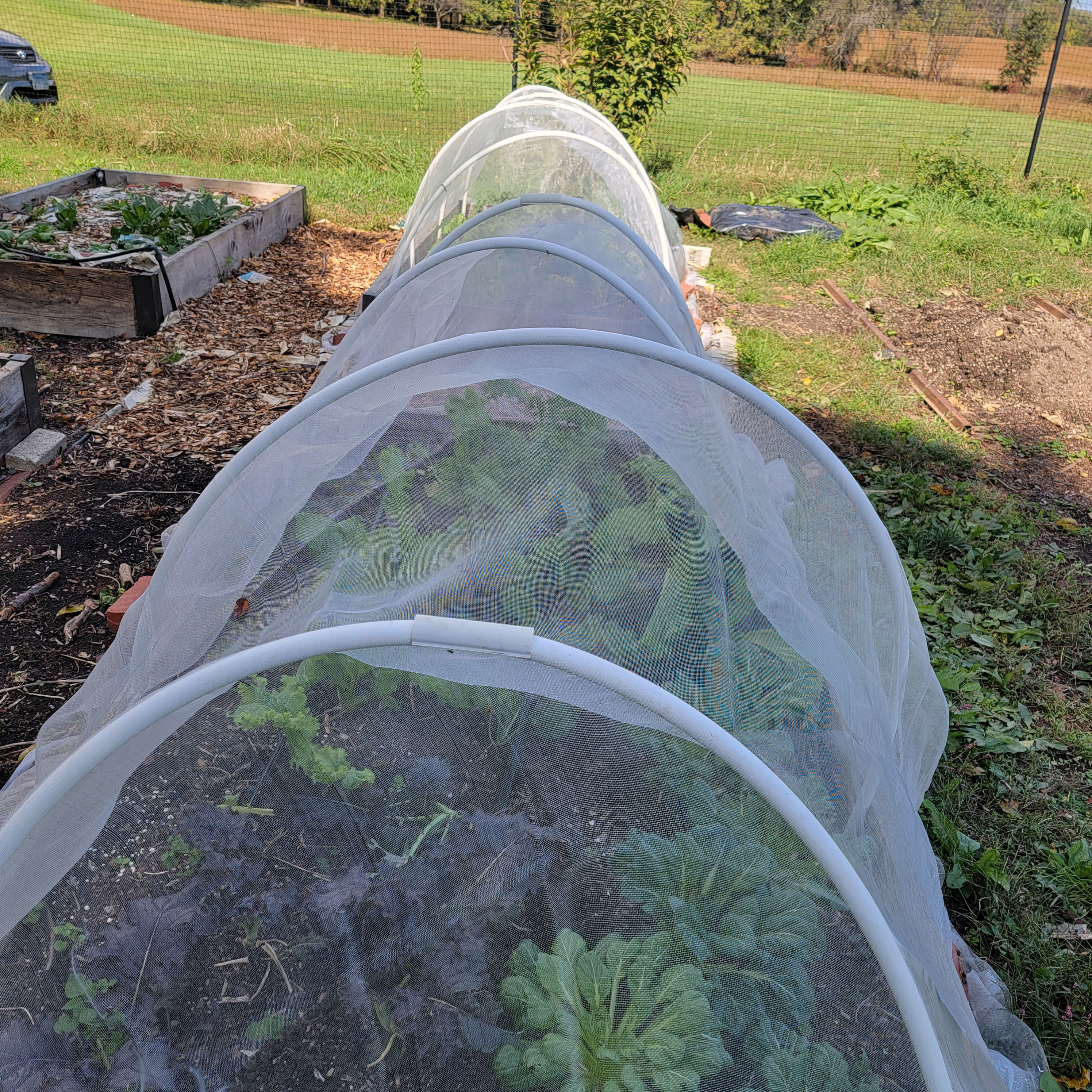
Herbs, Veggies, and Fruit
- Keep an eye out for the first frost date. In Zone 7, it is predicted to be between October 15 and November 15.
- Dig up your potatoes and store them in a cool, dark spot.
- Plant cover crops in vegetable gardens and annual beds. Continue planting cool-season vegetables (rye, clover, hairy vetch, winter peas, turnips, carrots, beets, spinach, Swiss chard, Chinese cabbage, kale, and Brussels sprouts); plant garlic now through the end of October.
- Harvest sweet potatoes.
- This is a good time to have vegetable garden and landscape soils tested.
- Pick pumpkins at a local pick-your-own farm or visit a local farmer’s market.
- Watch your pumpkins/squash. Harvest them when their rinds are dull and hard.
- Pot up rosemary and chives for over-wintering indoors.
- Harvest your herbs often and keep them trimmed back to encourage leafy growth.
- Harvest leaves of herbs used in cooking (rosemary, basil, sage) in the early morning for best flavor.
- Cut herbs and hang dry in a cool, dry place indoors.
- Preserve gourds and dry flowers for display in the fall.
- Water deeply when needed.
- Remove finished plants.
- Harvest regularly from your vegetable garden to prevent rot and waste.
- Harvest onions when tops die back.
- Deadhead garlic chives before they go to seed. Makes a nice cut flower.
- Direct-sow vegetable seeds.
- Mulch strawberry beds for winter.
- New fruit plants – keep watered their first spring, summer, and fall.
- Hand-pick cabbage worms from cabbage and broccoli.
- Thin seedlings.
- Apply dormant oil spray to fruit trees.
- Pests to watch for: Asparagus beetle, aphids, cabbage worms, corn borer, corn earworm, cutworms, Japanese beetles, squash vine borer, and tomato hornworm.
- Diseases to watch for: Powdery mildew, fungal, bacterial, viral diseases.
- Here are some more UMD’s HGIC Garden Tips.
Lawns
- Fertilize your tall and fine fescues and bluegrass with 1 lb. Nitrogen per 1,000 square feet.
- Over seeding may be done now through October.
- Keep newly seeded lawns well watered.
- Apply fertilizer and lime to turfgrass based on soil tests and UME recommendations.
- Have soil tested (every 3 years at minimum). Apply lime as needed to adjust pH.
- Mow in the early evening and cut off no more than one-third of the grass height at one time. Leave clippings on the ground to provide nutrients.
- Sharpen your lawnmower blade.
- Dethatch if necessary and plug aerate BEFORE applying weed control.
- Clean yard of all leaves and other debris.
- Turn your compost pile.
- Diseases to watch for: brown patch, and red thread
- Pests to watch for: Grubs
- See UMD’s HGIC Garden Tips for more details.

Indoors/Houseplants
- All houseplants should be indoors now.
- Take cuttings of plants you want to overwinter inside and place in water.
- Look out for slug eggs grouped under sticks and stones; they are the size of BBs and pale in color.
- Prune potted bougainvillea or hanging baskets that will overwinter inside.
- Force the buds on Christmas cactus by placing in a cool (55-60 degrees) room for 13 hours of darkness.
- Pot up Paper Whites and Amaryllis for holiday blooming. Repot every other year at this time. Store in a cool, dark place and do not water until flower buds or leaves emerge.
- Give your houseplants a quarter turn every few weeks.
- Keep all houseplants out of drafts and away from heat vents.
- Keep succulents and cacti on the dry side.
- Repot root-bound houseplants and start fertilizing them.
- Do not over water house plants.
- Check on your container plants daily and keep them well-watered.
- Remove old leaves, damaged stems.
- Pinch out growing tips of leggy cuttings and plants that are overwintering.
- Clean the leaves of your indoor houseplants to prevent dust and film build-up.
- Pests to watch for: aphids, spider mites, mealybug, scale, and whitefly .
- See UMD’s HGIC Garden Tips for more information.
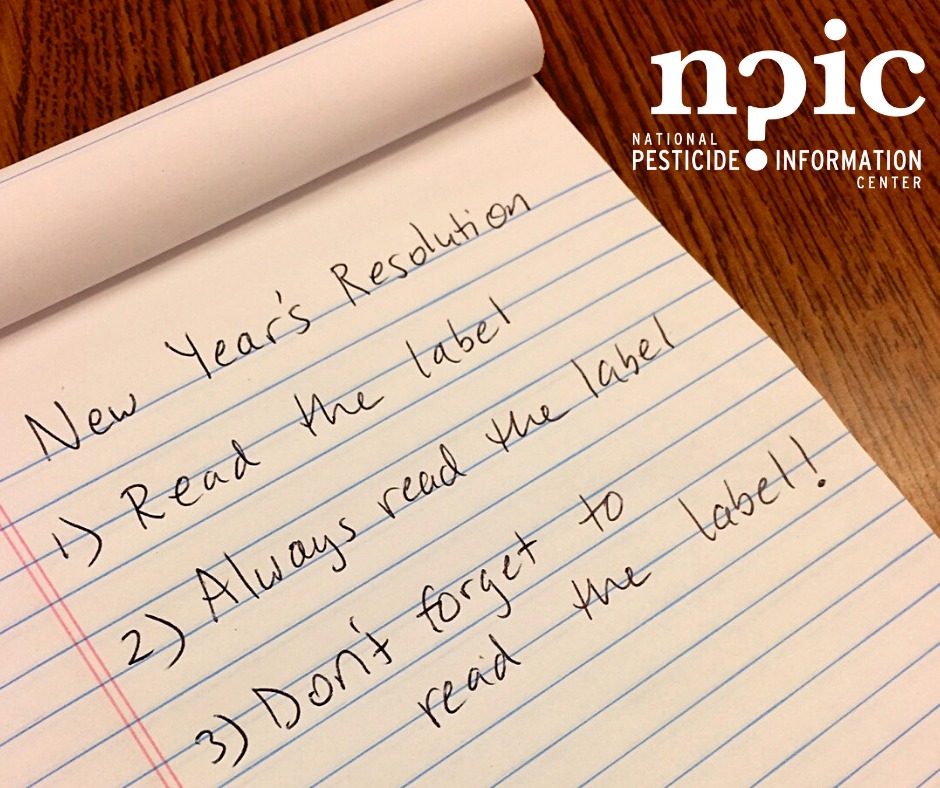
Read and follow label instructions on all pesticides and herbicides.
Start the year off by minimizing your #risk to #pesticides and always #ReadTheLabel! Learn more here: http://npic.orst.edu/health/readlabel.html
Questions about your label? Call us! 800-858-7378 M-F 8am-12pm PST
Indoor/Outdoor Insect and Wildlife Tips
- Check indoors for termites and winter ants.
- This is the perfect time to apply grub control.
- If you see spotted lanternfly in your garden, do not spray with chemicals or home remedies because it may harm beneficial insects and pollinators.
- Caulk and seal your outside walls to prevent insect entry into your home.
- Check your plants at night with a flashlight for any night-feeding insects like slugs.
- If you find slug damage, set out beer traps or Sluggo pellets.
- Watch for insect and disease problems throughout your garden.
- Leave hummingbird feeders out until October 15.
- Start feeding birds to get them in the habit for this winter.
- Put suet out for birds.
- Keep bird feeders clean and filled.
- Wash out birdbaths weekly with diluted bleach solution.
- Clean your hummingbird feeders and add new sugar-water every three days.
- Switch your deer deterrent spray.
- Set out traps for mice, moles, and voles.
- Watch for: eggs, larvae, overwintering stage of many species, carpenter ants, flies, stink bugs, termites, rabbits, raccoons, groundhogs, deer, mice, moles, snakes, squirrels, and voles.
- For more information, see UMD’s HGIC Garden Tips.
Source: University of Maryland’s Home and Garden Information Center (HGIC) and the Washington Gardener.
See more tips from HGIC:
Harvest Festival
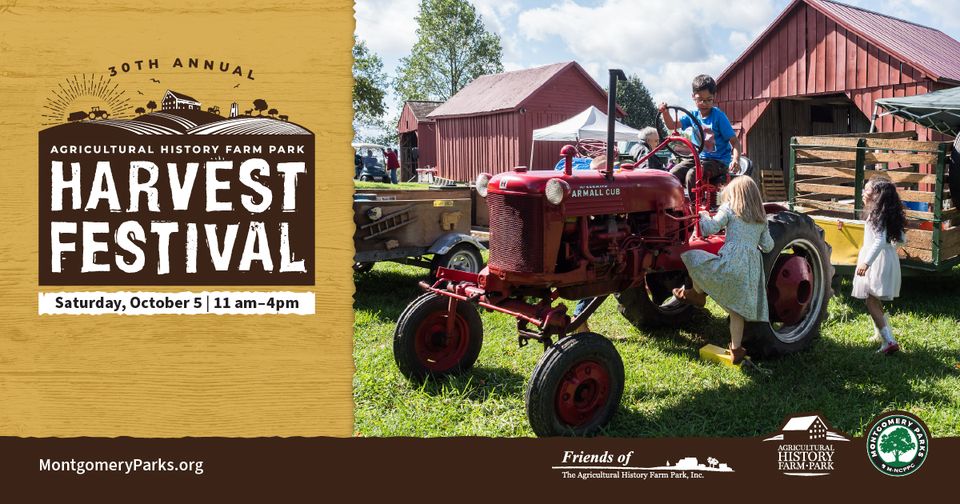
Saturday, October 5, 2024
Agricultural History Farm Park
18400 Muncaster Road
Derwood, MD 20855
Time: 11:00 am – 4:00 pm
Enjoy a beautiful, fun-filled fall day on the farm with traditional crafts, activities, music, and food during the 30th annual Harvest Festival at the Agricultural History Farm Park on October 5 from 11a to 4p. Participate in hands-on farm activities such as candle dipping, tin-smithing, quilting and spinning; paint pumpkins and build scarecrows; play historic games; enjoy live music and storytelling; experience farm equipment exhibitions and demonstrations; meet heritage farm animals; and partake of food, visit craft demonstrators, and take a hay ride around the farmstead.
Montgomery Parks’ Agricultural History Farm Park is situated on 455 acres of land and serves as a historic farm site as well as a modern farming activity center. Along with the Farm Park’s historic farmstead, the park is also home to the University of Maryland Extension Office and Master Gardener Program for Montgomery County, as well as the Friends of the Agricultural History Farm Park, National Capital Dahlia Society demonstration garden, and multiple 4-H clubs.
Admission is $20/Car (cash only)
Refreshments, food, and some activities will have additional fees ($)
Event takes place rain or shine.
Master Gardener Lectures – Seed Saving Fundamentals
Saturday, October 12: 2:00pm – 3:00pm

Rockville Memorial Library – 2nd Floor Meeting Room
21 Maryland Avenue
Rockville, MD 20850
AGE GROUP: TEENS, OLDER ADULTS, ADULT
EVENT TYPE: LECTURES AND DISCUSSIONS ENVIRONMENT
Master Gardener Meipo Martin covers the fundamentals of seed saving.
Attend this Master Gardener lecture to learn the reasons for saving seeds. Other topics covered in this lecture include: collection methods and timing, how to clean seeds, how to save pure seeds, seed storage, seed germination/viability test, and techniques to aid germination.
Houseplants 101
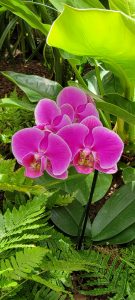
Saturday, October 19: 1:00pm – 2:00pm
Quince Orchard Library
15831 Quince Orchard Rd, Gaithersburg, MD 20878
Age group: Older Adults, Adult
Join Meipo Martin from Master Gardeners for a presentation about indoor tropical plants.
Learn about tropical plants that make successful indoor houseplants. Find out how to choose a site and how plants function. Discover what plants need including light, temperature, humidity, and soil requirements. Understand the hows and whens of water and fertilizer. Other maintenance needs and common problems (and remedies!) will be discussed.
Questions about this program? Contact the branch 240-777-0200.
Montgomery Parks – Events
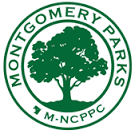
Native Specialist Bees
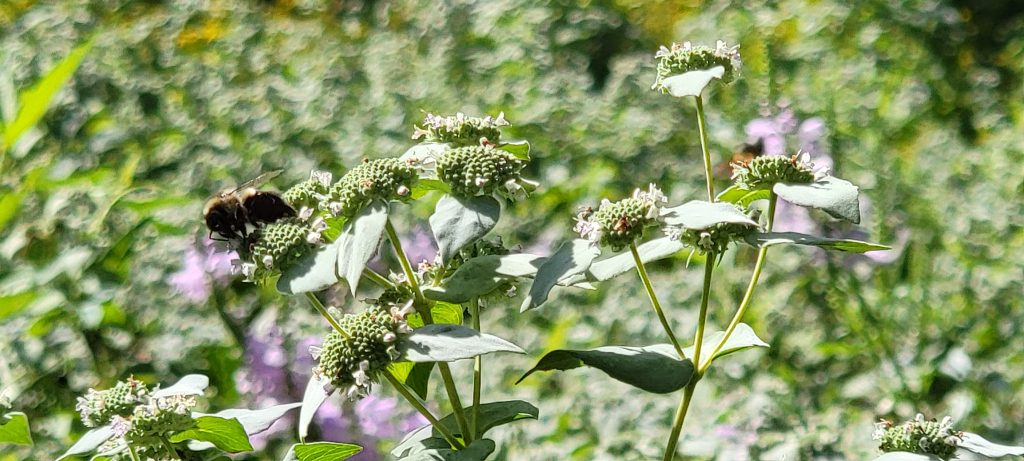
Thursday, October 10, 2024
Time: 7:00 pm – 8:30 pm
Fee: $15.00
Instructor: Heather Holm, biologist, pollinator conservationist and award-winning author
The monarch butterfly is probably the most famous insect specialist feeding only on milkweed, but did you know that many native bees are also specialists? Studying these native plant-bee specializations and their overlapping habitat requirements will help your garden support more pollinators. Threats such as habitat loss and climate change will also be covered.
**Live Zoom lecture with audience Q&A. Recordings will be made available to students.
Wildflower Walks
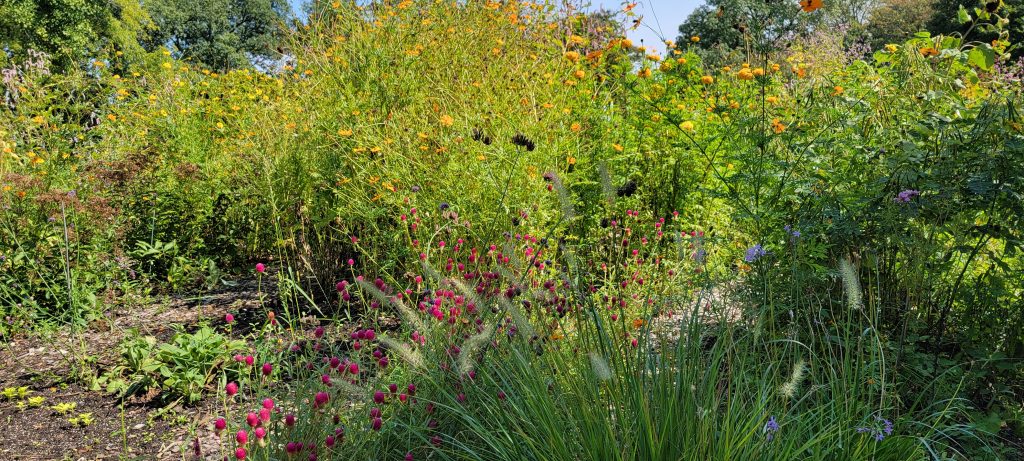
Sunday, October 20, 2024
Time: 10:00 am – 11:30 am
Location: Locust Grove Nature Center
7777 Democracy Boulevard Bethesda, Maryland 20817
Fee: $7.00
Fall is a rainbow of wildflowers, from goldenrods to asters in every shade of purple. Take a leisurely stroll through the park with our Master Naturalists who will interpret this last spectacular show of color before the changing of the seasons.
Space is limited and registration is required. Participants should be able to walk on natural surface trails, which may have some steep inclines.
Dealing with Deer and Other Mammal Pests in Your Garden
Thursday, October 24, 2024
Time: 7:00 pm – 8:30 pm
Fee: $15.00
Instructor: Kathy Jentz, editor of Washington Gardener Magazine
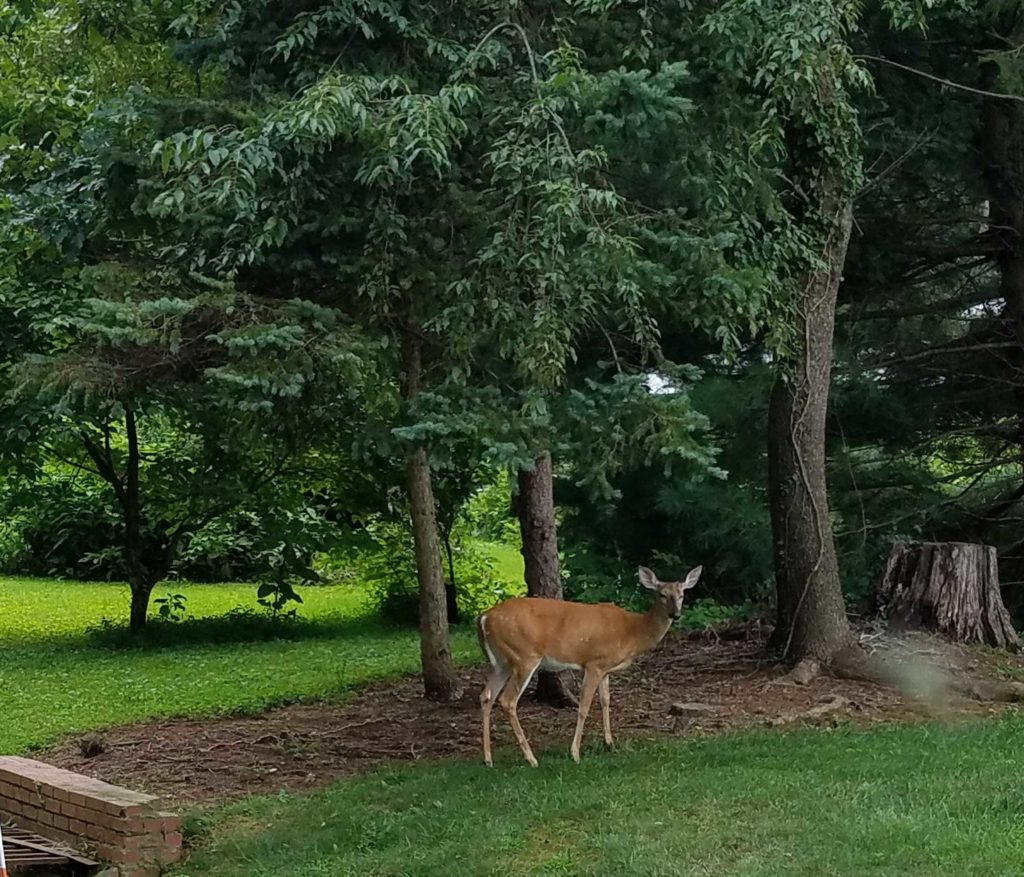
Bambi may be cute, but he would love to make a feast of your garden. Learn some proven and humane tactics to keep your edible and ornamental gardens safe from deer, rabbits, rats, squirrels, groundhogs and other warm-blooded creatures. Kathy will also touch upon design strategies and plant selections.
**Live Zoom lecture with audience Q&A. Recordings will be made available to students.
Birdability Week
Monday, October 21, 2024 – Sunday, October 27, 2024

Birdability Week is an annual occasion to exchange valuable resources and innovative ideas, aiming to foster an inclusive and accommodating environment within the birding community. By encouraging accessibility, embracing diversity, and promoting a warm and open atmosphere, Birdability Week aims to ensure that birding is an enjoyable experience for everybody.
Celebrate the beauty of birds and enjoy a welcoming and inclusive birding experiences October 21 through October 27, 2024 in Montgomery Parks.
October 21 | Socials for 55+: Gourd Homes for Bird-Friendly Crafting
October 22 | Bird Walk Screening
October 23 | E-bird Tutorial
October 24 | Socials for 55+: The Art of Bird Carving
October 24 | Birds & Bats & Beavers Pontoon Boat Cruise
October 25 | The Art of Birds
October 26 | Beginning Birding for Every Body
October 27 | Birdability Week Celebration!
Registration is open!
To learn more about Birdability Week throughout the nation visit Birdability.org
Mixed Winter Container
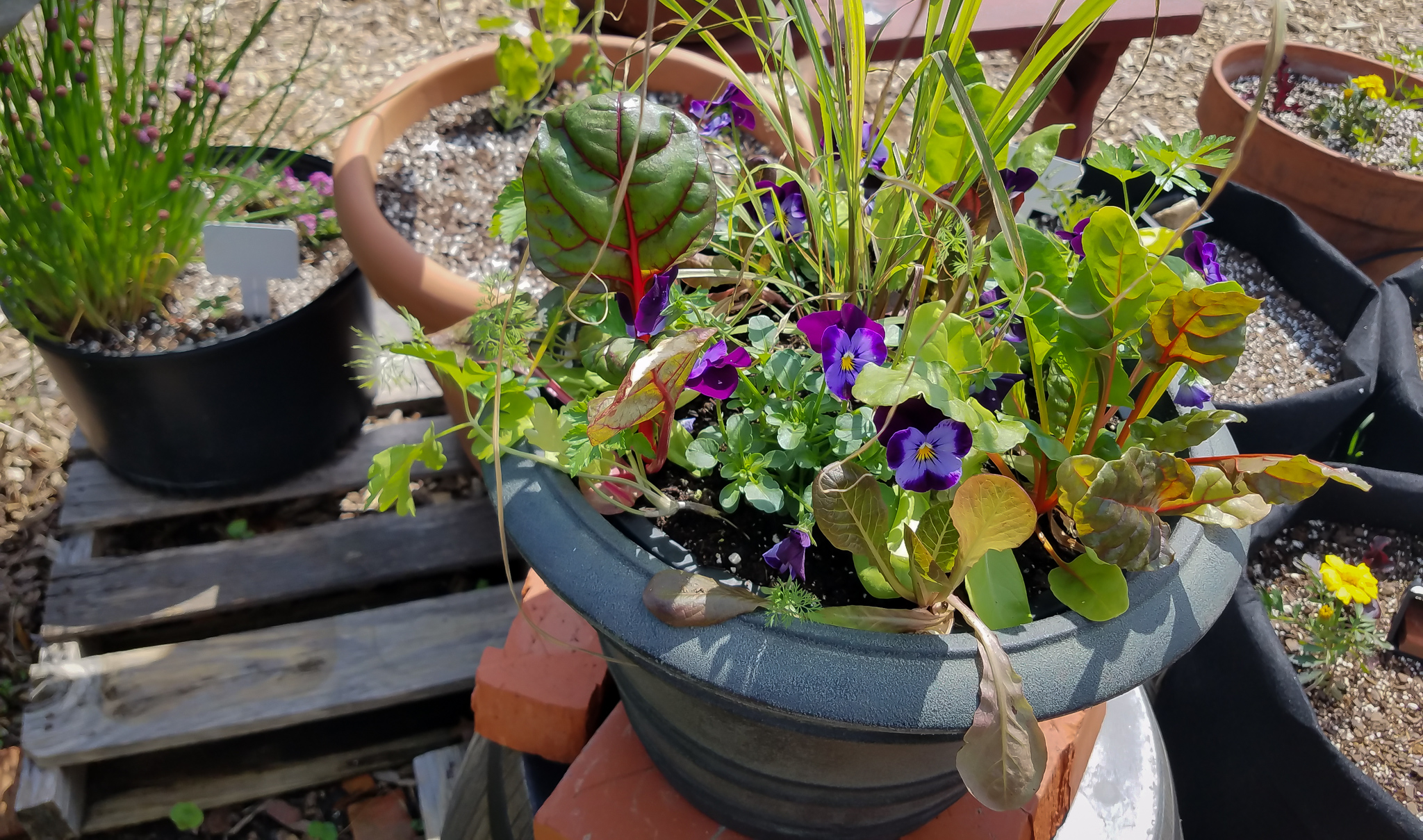
Wed, November 6, 2024
Time: 10:30 am – 11:30 am
Brookside Gardens
1800 Glenallan Avenue
Wheaton, MD, 20902
(301) 962-1404
Instructor: Jason Gedeik, Brookside Gardens staff
Fee: $75.00
Create a container garden with plants that can withstand winter’s harshest conditions while providing you with a beautiful respite from the dull weather. Mix dwarf evergreens with a splash of vibrant violas for some late season color. Cost covers materials, including a 14-inch container (or bring your own favorite).
Montgomery Parks – Hot Volunteer Opportunities!
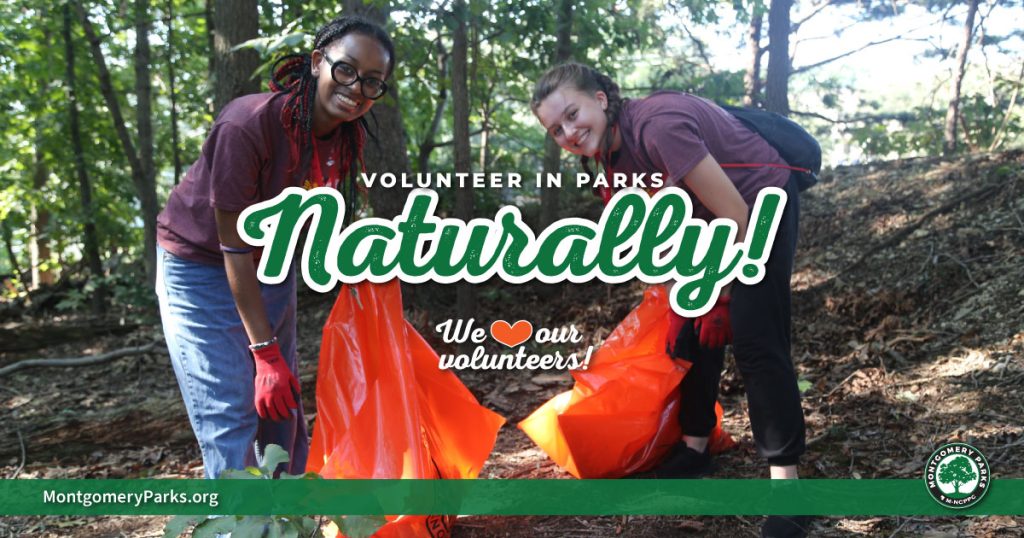
| Are you looking for a way to complete your Student Service-Learning Hours? Or are you looking for a way to give back to your community? Check out these gardening volunteer opportunities: Gardener | Various dates and times | Ages 16+ | Agricultural History Farm Park Gardener | First Tuesday of every month beginning May 7 through October 1 | 9 am to 1 pm | Ages 21+ | Silver Spring Intermediate Neighborhood Park Crop Production Aide | Various dates and times | Ages 18+ | Pope Farm Nursery Grown@Pope Volunteer Coordinator | April through September | Ages 18+ | Pope Farm Nursery Grown@Pope Workdays | Various dates and times | Ages 16+ | Pope Farm Nursery |
Montgomery College Lifelong Learning Home and Garden Classes – Fall 2024

See Schedule of Fall Classes below:
| HOW TO GROW AND BLOOM – LLI 022 | ||||||||
| View Catalog Description & Prerequisites | ||||||||
| Course | CRN | Credits | Days | Time | Start – End Dates | Campus | Location | Instructors |
| LLI022 | 24355 | 0.300 | S | 6:30 PM – 9:30 PM | 11/09/24 – 11/09/24 | WDCE Virtual-Remote | DL | Janet S. Johnson |
| GARDEN DESIGN – LLI 519 | ||||||||
| View Catalog Description & Prerequisites | ||||||||
| LLI519 | 24368 | 0.800 | T | 6:30 PM – 8:30 PM | 10/22/24 – 11/12/24 | Rockville | MK 101 | Janet S. Johnson |
Let’s Talk Gardens
Thursdays 12 to 1 p.m.
Smithsonian Gardens

“Grow” your gardening know-how! Our free online gardening program, Let’s Talk Gardens, covers a wide range of topics presented by our own professional staff, as well as guest speakers.
And we encourage you to watch videos in our Let’s Talk Gardens Video Library.
